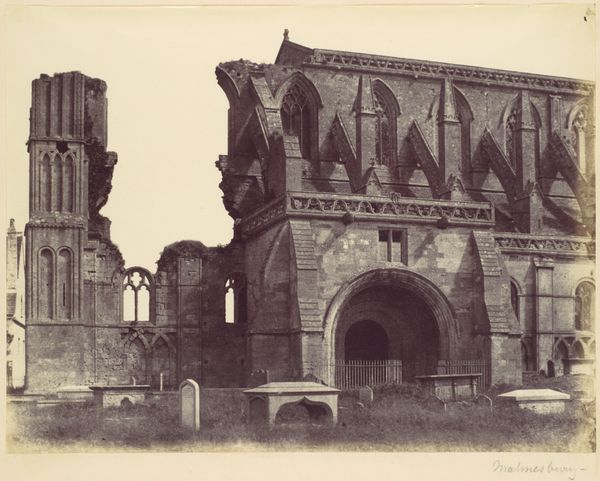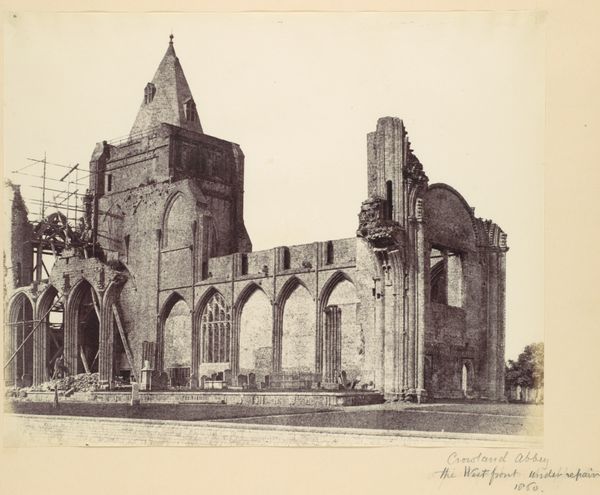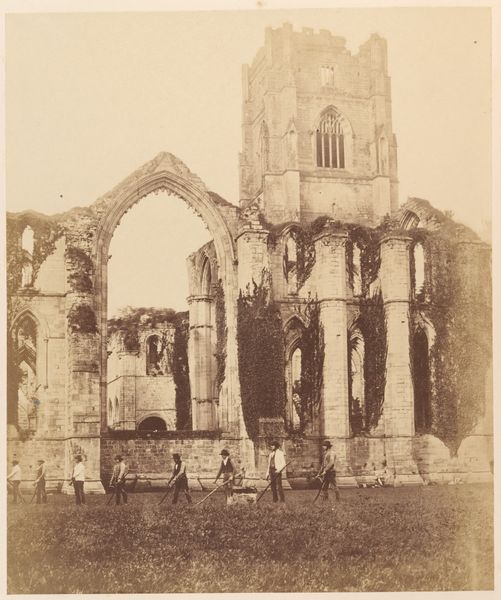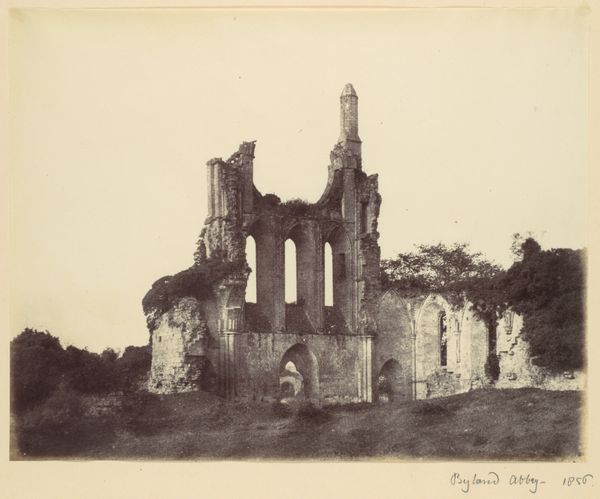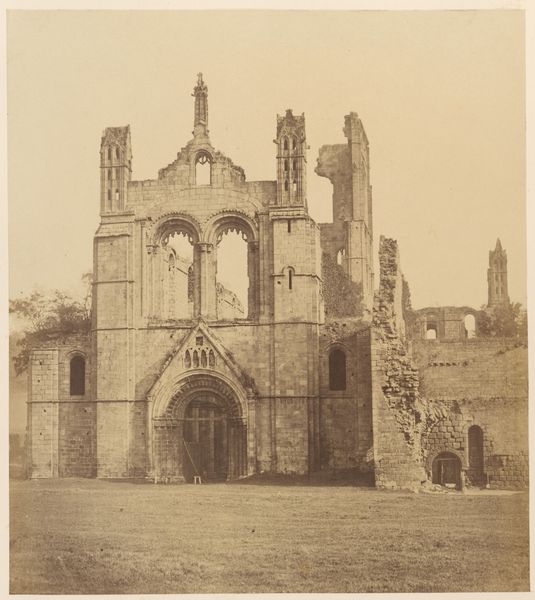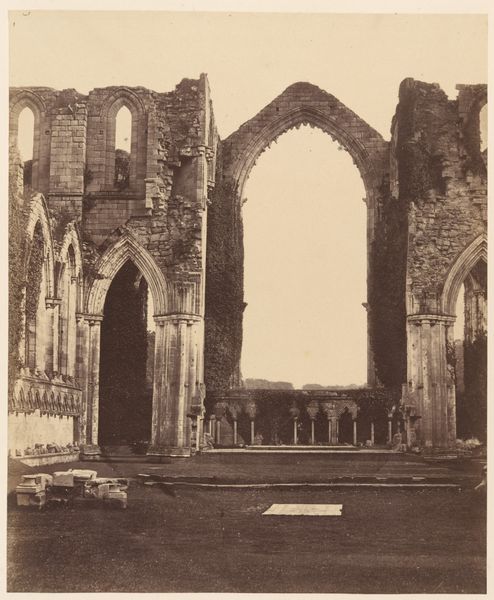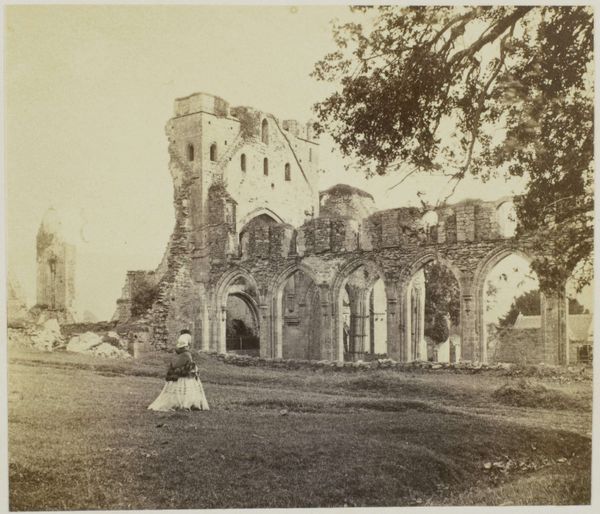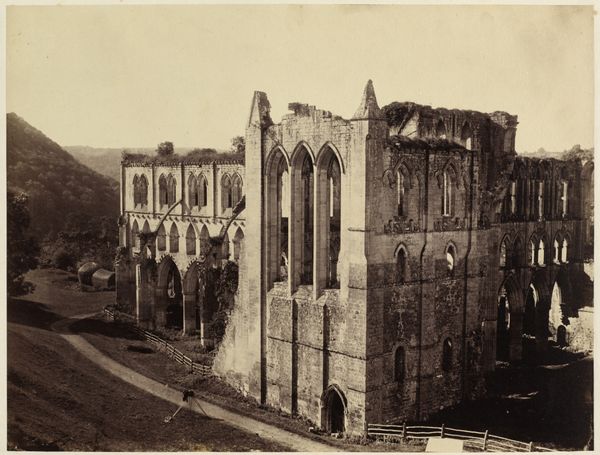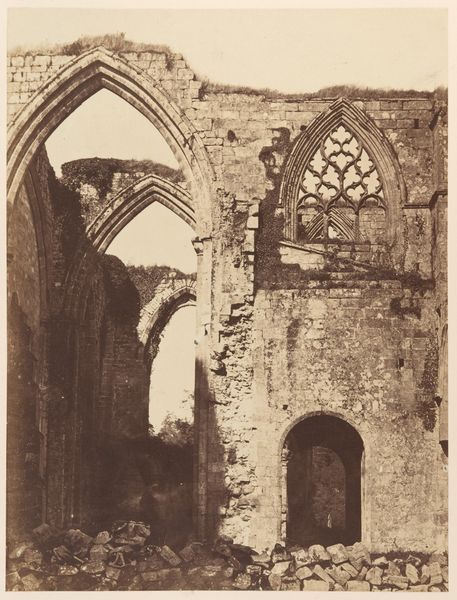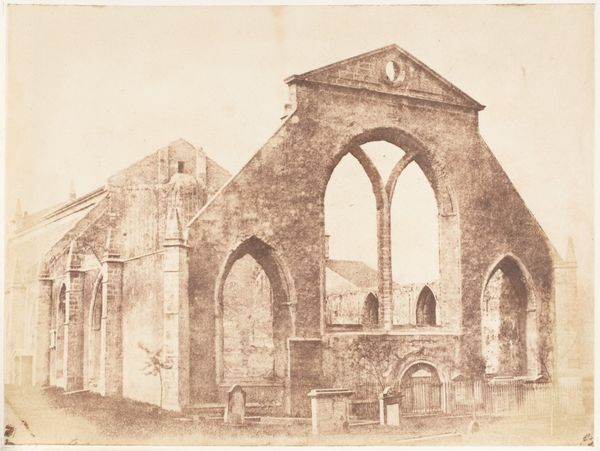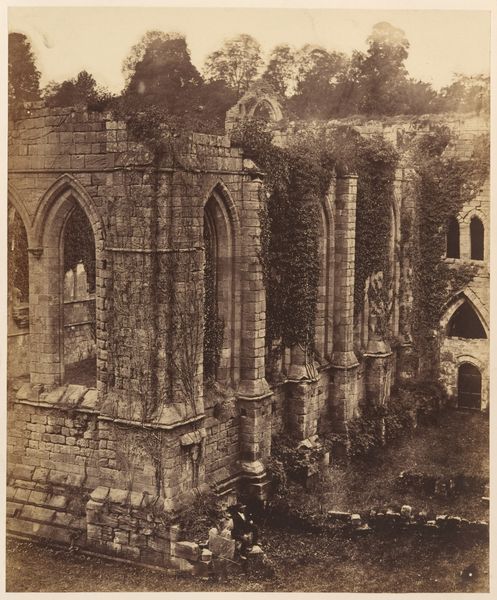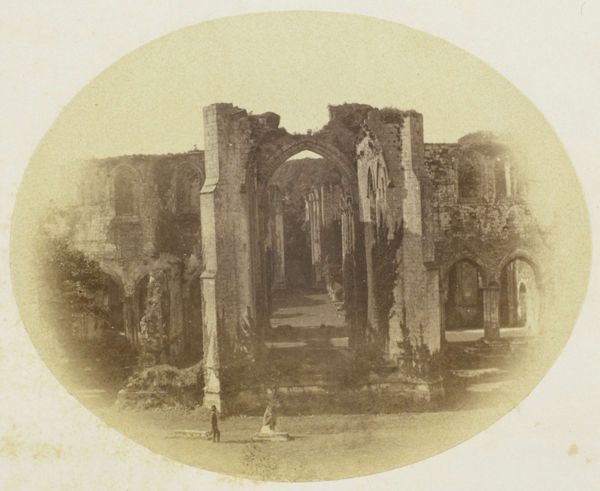
photography, gelatin-silver-print, albumen-print, architecture
#
landscape
#
photography
#
gelatin-silver-print
#
albumen-print
#
architecture
Dimensions: 21.4 x 27.2 cm. (8 7/16 x 10 11/16 in.)
Copyright: Public Domain
Editor: Here we have Alfred Capel Cure’s “Wenlock Abbey,” taken in 1858. It's a gelatin-silver and albumen print photograph, and what strikes me most is the starkness of the ruins. They’re so clearly defined, almost… clinical. What do you see in this piece? Curator: I’m immediately drawn to the photographic process itself. Consider the labor involved: the preparation of the light-sensitive emulsions, the exposure time, the darkroom work. Photography in 1858 wasn't instant; it was a craft, a manufacturing process that involved considerable material knowledge and physical work. And how does that physical process affect our viewing of what is considered ‘fine art’ today? Editor: That’s fascinating! So, you're saying that the medium itself – the physical making of the photograph – is key to understanding the artwork? How does the architecture, and the use of ruins here, affect this concept? Curator: Precisely! We're not just seeing a landscape. We're witnessing a specific moment in photographic history. The ruins act as both subject matter and evidence of material change over time. What are these building ruins composed of? By who, and for what, were these ruins once crafted? Then they are pictured by Cure. What labor, and time, did it take for him to present this artwork of the ruins? Ruins also are objects, and by questioning its origin, we question its process and function of materials used to craft. It prompts questions about production and value. Is it documentation or art? How do we make that differentiation today, with so many easily-captured photos taken every single day? Editor: I never thought about it that way. The material process and the ruins' physical history really add another layer to the meaning. It's less about romanticizing the past and more about the concrete act of creation and destruction. Curator: Exactly. And perhaps that's the most enduring message of “Wenlock Abbey”: the interplay between labor, decay, and the ever-evolving definitions of art and artifact. It helps viewers reconsider preconceived values related to high art today. Editor: That really changes my perspective. Thanks, I’ve learned a lot! Curator: Likewise! Thinking about the material conditions always deepens the experience.
Comments
No comments
Be the first to comment and join the conversation on the ultimate creative platform.
